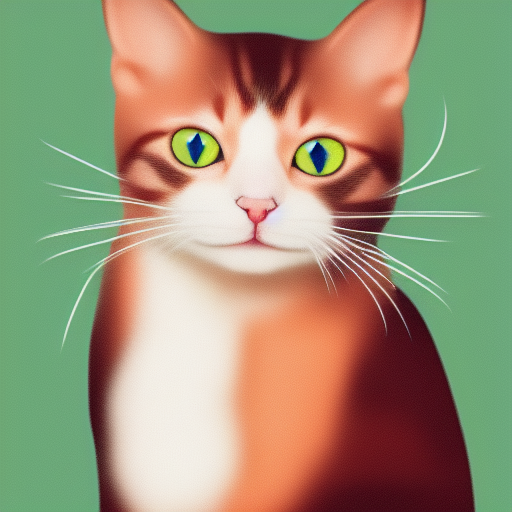Inference of Stable Diffusion in pure C/C++
- Plain C/C++ implementation based on ggml, working in the same way as llama.cpp
- Super lightweight and without external dependencies.
- 16-bit, 32-bit float support
- 4-bit, 5-bit and 8-bit integer quantization support
- Accelerated memory-efficient CPU inference
- Only requires ~2.3GB when using txt2img with fp16 precision to generate a 512x512 image, enabling Flash Attention just requires ~1.8GB.
- AVX, AVX2 and AVX512 support for x86 architectures
- SD1.x and SD2.x support
- Full CUDA backend for GPU acceleration, for now just for float16 and float32 models. There are some issues with quantized models and CUDA; it will be fixed in the future.
- Flash Attention for memory usage optimization (only cpu for now).
- Original
txt2imgandimg2imgmode - Negative prompt
- stable-diffusion-webui style tokenizer (not all the features, only token weighting for now)
- LoRA support, same as stable-diffusion-webui
- Latent Consistency Models support (LCM/LCM-LoRA)
- Sampling method
Euler AEulerHeunDPM2DPM++ 2MDPM++ 2M v2DPM++ 2S aLCM
- Cross-platform reproducibility (
--rng cuda, consistent with thestable-diffusion-webui GPU RNG) - Embedds generation parameters into png output as webui-compatible text string
- Supported platforms
- Linux
- Mac OS
- Windows
- Android (via Termux)
- More sampling methods
- Make inference faster
- The current implementation of ggml_conv_2d is slow and has high memory usage
- Continuing to reduce memory usage (quantizing the weights of ggml_conv_2d)
- Implement BPE Tokenizer
- Add TAESD for faster VAE decoding
- k-quants support
git clone --recursive https://github.com/leejet/stable-diffusion.cpp
cd stable-diffusion.cpp
- If you have already cloned the repository, you can use the following command to update the repository to the latest code.
cd stable-diffusion.cpp
git pull origin master
git submodule init
git submodule update
-
download original weights(.ckpt or .safetensors). For example
- Stable Diffusion v1.4 from https://huggingface.co/CompVis/stable-diffusion-v-1-4-original
- Stable Diffusion v1.5 from https://huggingface.co/runwayml/stable-diffusion-v1-5
- Stable Diffuison v2.1 from https://huggingface.co/stabilityai/stable-diffusion-2-1
curl -L -O https://huggingface.co/CompVis/stable-diffusion-v-1-4-original/resolve/main/sd-v1-4.ckpt # curl -L -O https://huggingface.co/runwayml/stable-diffusion-v1-5/resolve/main/v1-5-pruned-emaonly.safetensors # curl -L -O https://huggingface.co/stabilityai/stable-diffusion-2-1/blob/main/v2-1_768-nonema-pruned.safetensors
-
convert weights to gguf model format
./bin/convert sd-v1-4.ckpt -t f16
You can specify the output model format using the --type or -t parameter
f16for 16-bit floating-pointf32for 32-bit floating-pointq8_0for 8-bit integer quantizationq5_0orq5_1for 5-bit integer quantizationq4_0orq4_1for 4-bit integer quantization
mkdir build
cd build
cmake ..
cmake --build . --config Releasecmake .. -DGGML_OPENBLAS=ON
cmake --build . --config Release
This provides BLAS acceleration using the CUDA cores of your Nvidia GPU. Make sure to have the CUDA toolkit installed. You can download it from your Linux distro's package manager (e.g. apt install nvidia-cuda-toolkit) or from here: CUDA Toolkit. Recommended to have at least 4 GB of VRAM.
cmake .. -DSD_CUBLAS=ON
cmake --build . --config Release
Enabling flash attention reduces memory usage by at least 400 MB. At the moment, it is not supported when CUBLAS is enabled because the kernel implementation is missing.
cmake .. -DSD_FLASH_ATTN=ON
cmake --build . --config Release
usage: ./bin/sd [arguments]
arguments:
-h, --help show this help message and exit
-M, --mode [txt2img or img2img] generation mode (default: txt2img)
-t, --threads N number of threads to use during computation (default: -1).
If threads <= 0, then threads will be set to the number of CPU physical cores
-m, --model [MODEL] path to model
--lora-model-dir [DIR] lora model directory
-i, --init-img [IMAGE] path to the input image, required by img2img
-o, --output OUTPUT path to write result image to (default: .\output.png)
-p, --prompt [PROMPT] the prompt to render
-n, --negative-prompt PROMPT the negative prompt (default: "")
--cfg-scale SCALE unconditional guidance scale: (default: 7.0)
--strength STRENGTH strength for noising/unnoising (default: 0.75)
1.0 corresponds to full destruction of information in init image
-H, --height H image height, in pixel space (default: 512)
-W, --width W image width, in pixel space (default: 512)
--sampling-method {euler, euler_a, heun, dpm2, dpm++2s_a, dpm++2m, dpm++2mv2, lcm}
sampling method (default: "euler_a")
--steps STEPS number of sample steps (default: 20)
--rng {std_default, cuda} RNG (default: cuda)
-s SEED, --seed SEED RNG seed (default: 42, use random seed for < 0)
-b, --batch-count COUNT number of images to generate.
--schedule {discrete, karras} Denoiser sigma schedule (default: discrete)
-v, --verbose print extra info
./bin/sd -m ../sd-v1-4-f16.gguf -p "a lovely cat"
Using formats of different precisions will yield results of varying quality.
| f32 | f16 | q8_0 | q5_0 | q5_1 | q4_0 | q4_1 |
|---|---|---|---|---|---|---|
 |
 |
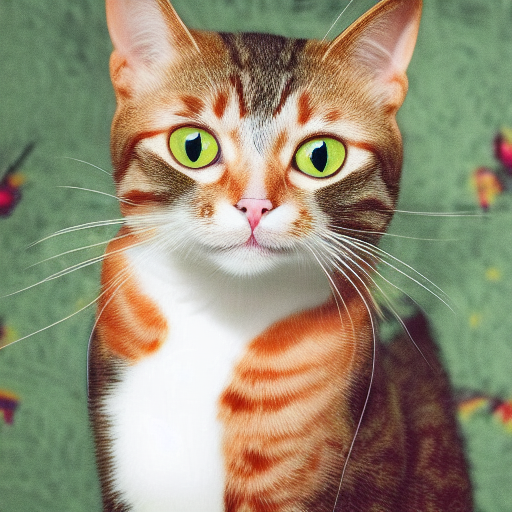 |
 |
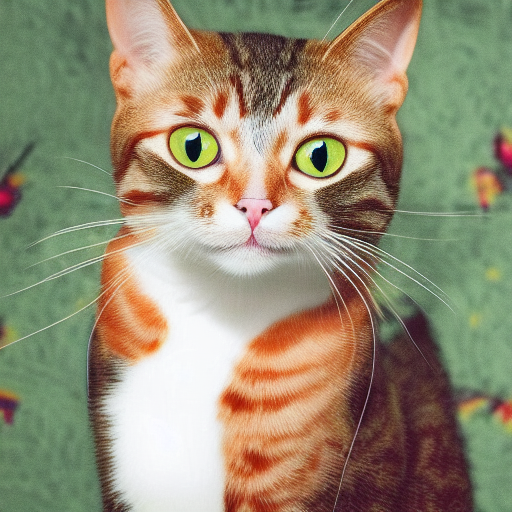 |
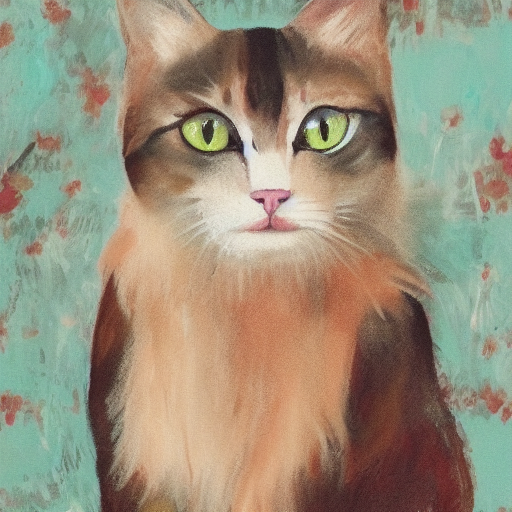 |
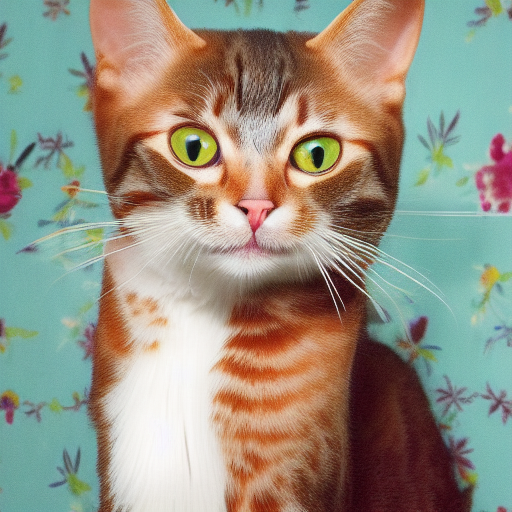 |
./output.pngis the image generated from the above txt2img pipeline
./bin/sd --mode img2img -m ../models/sd-v1-4-f16.gguf -p "cat with blue eyes" -i ./output.png -o ./img2img_output.png --strength 0.4
-
convert lora weights to gguf model format
bin/convert [lora path] -t f16 # For example, bin/convert marblesh.safetensors -t f16 -
You can specify the directory where the lora weights are stored via
--lora-model-dir. If not specified, the default is the current working directory. -
LoRA is specified via prompt, just like stable-diffusion-webui.
Here's a simple example:
./bin/sd -m ../models/v1-5-pruned-emaonly-f16.gguf -p "a lovely cat<lora:marblesh:1>" --lora-model-dir ../models
../models/marblesh.gguf will be applied to the model
- Download LCM-LoRA form https://huggingface.co/latent-consistency/lcm-lora-sdv1-5
- Specify LCM-LoRA by adding
<lora:lcm-lora-sdv1-5:1>to prompt - It's advisable to set
--cfg-scaleto1.0instead of the default7.0. For--steps, a range of2-8steps is recommended. For--sampling-method,lcm/euler_ais recommended.
Here's a simple example:
./bin/sd -m ../models/v1-5-pruned-emaonly-f16.gguf -p "a lovely cat<lora:lcm-lora-sdv1-5:1>" --steps 4 --lora-model-dir ../models -v --cfg-scale 1
| without LCM-LoRA (--cfg-scale 7) | with LCM-LoRA (--cfg-scale 1) |
|---|---|
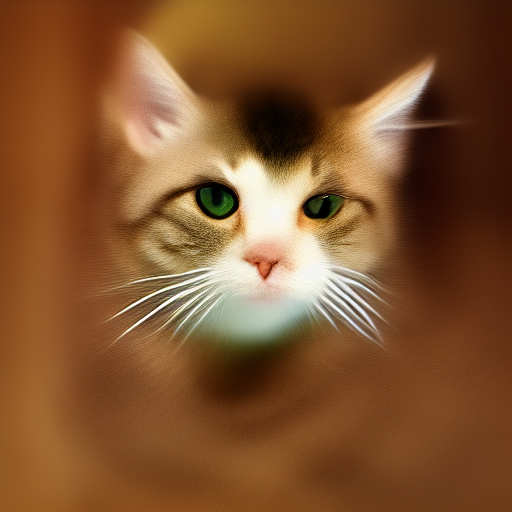 |
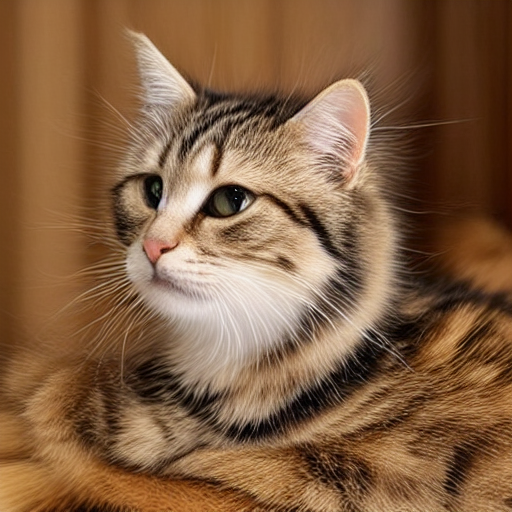 |
docker build -t sd .docker run -v /path/to/models:/models -v /path/to/output/:/output sd [args...]
# For example
# docker run -v ./models:/models -v ./build:/output sd -m /models/sd-v1-4-f16.gguf -p "a lovely cat" -v -o /output/output.png| precision | f32 | f16 | q8_0 | q5_0 | q5_1 | q4_0 | q4_1 |
|---|---|---|---|---|---|---|---|
| Disk | 2.7G | 2.0G | 1.7G | 1.6G | 1.6G | 1.5G | 1.5G |
| Memory (txt2img - 512 x 512) | ~2.8G | ~2.3G | ~2.1G | ~2.0G | ~2.0G | ~2.0G | ~2.0G |
| Memory (txt2img - 512 x 512) with Flash Attention | ~2.4G | ~1.9G | ~1.6G | ~1.5G | ~1.5G | ~1.5G | ~1.5G |
Thank you to all the people who have already contributed to stable-diffusion.cpp!

